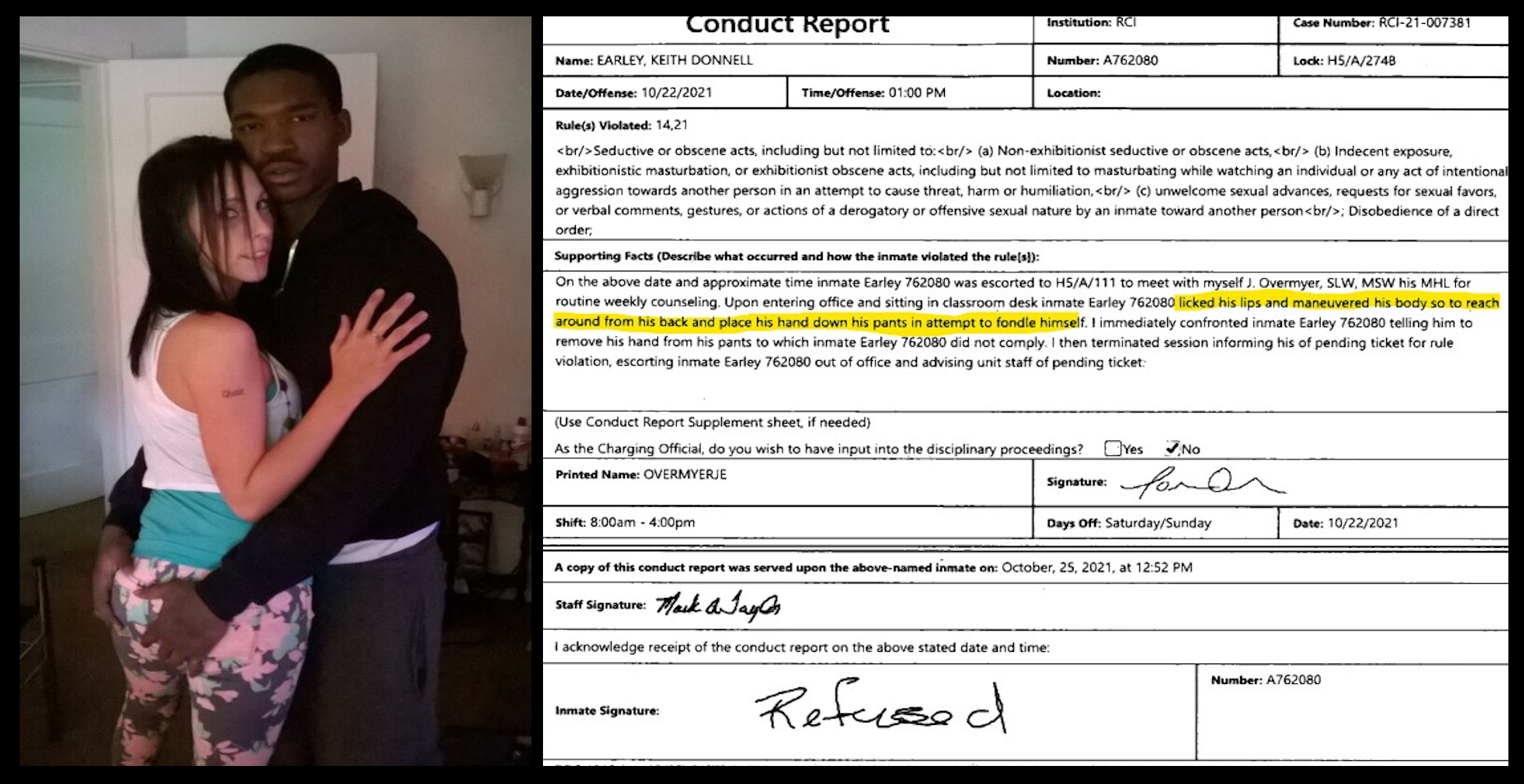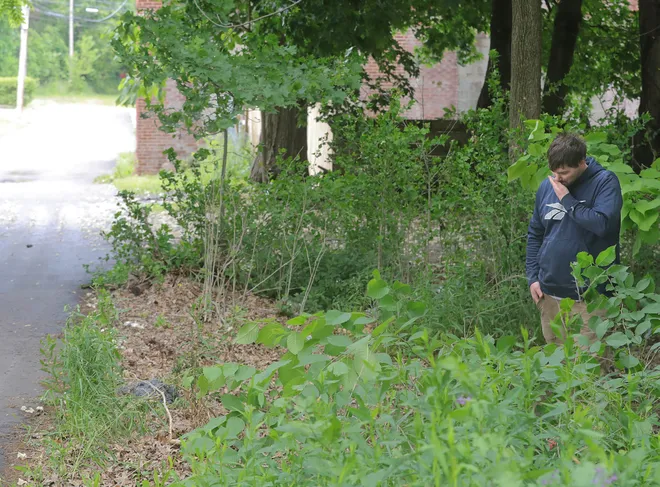Akron, Ohio – In June, a teenage White girl was tragically found dead in an alleyway, stunning a community and leaving more questions than answers. Months later, police finally made an arrest: a Black man with a vast criminal history who they now believe violated her corpse in the process.
According to the Akron Beacon Journal, 13-year-old Melanie Elkins was reported missing as a runaway from home on June 11th. The next day, she was found dead, discovered in an alleyway in broad daylight before a concerned citizen called the police. While details—including her cause of death— are slim, Police finally broke ground months later on August 8th when they arrested a suspect, 30-year-old Keith Earley.

Earley—who is Black—was arrested without incident and charged with the horrific crimes of gross abuse of a corpse, a fifth-degree felony, and failure to report knowledge of a death, a fourth-degree misdemeanor. Earley is currently held in the Summit County Jail on a $50,000 bond. According to local bond statutes, Early will only have to front a staggeringly low amount of $5,000 to walk free pending trial.
While police have found no signs of trauma so far, the Summit County Medical Examiner’s office reported that Elkin’s cause of death could take at least two weeks to determine from autopsy and toxicology reports, the results of which are still pending.
But who is Kieth Earley? Thanks to newly obtained information received by a Freedom of Information Act (FOIA) request, The Justice Report uncovered a career criminal and lifelong nuisance whose run-ins with law enforcement stretch back to his teenage years. In addition to prior convictions, obtained documents revealed a whopping 309 pages of correctional misbehavior records, including instances of brutal violence, sexual depravity, and hard drug use.
Earley’s first fight against the law was in 2010 when he pled guilty to attempted third-degree felonious assault. According to documents from the Summit County Clerk of Courts, Earley was held on a $50,000 bond and was eventually sentenced to serve two years at the Ohio Department of Rehabilitation and Correction (ODRC) and three years of parole after prison.

Through documents obtained by the Justice Report, Earley’s track record while in prison is dismal, and starkly contrasts with the peaceful character portrayed in letters of sympathy written to judges in an attempt to garner leniency.
In his first round in prison, Earley accrued 66 rules violations, most of them involving being out of his assigned place and refusing to work. According to misbehavior reports, Early would make a habit of not showing up to his educational classes, violently lunging at a teacher, and repeatedly getting written up for jamming his cell door with toilet paper so he could take longer showers.
Earley also appears to have been a prolific thief, stealing mess hall items, and once robbing a handicapped inmate of his entire meal tray. Other times, he was busted for smuggling a bottle of hooch.
Read Earley’s 309-page misbehavior packet here.
The documents appear to lay out a pattern of selfish, unrepentant criminality, and during internal disciplinary hearings, it seems Earley rarely takes accountability. In 2015, he once pled not guilty—but then changed his plea to guilty—after he was caught in possession of heroin.
He was charged with falsification, as he was previously charged with possession of marijuana. He was sentenced to two years of “community control” for the infraction in June 2015. He violated this punishment one month later, however, when he was convicted of a robbery charge and held on a $150,000 bond. He was then sent back to the ODRC for 18 months in Dec. 2015.
In May 2016, Earley’s attorney, Kenneth Crislip, filed a motion for judicial release. In it, he pleads to the court that Earley has “had time to reflect on his life and the problems that have led him to prison,” painting the black career criminal in an overwhelmingly positive and contradictory light.

“Mr. Earley has made every effort possible while being incarcerated to make life-changing decisions and better himself as a man, son, worker, co-worker, and human being,” the statement reads. “Keith never offered any excuse for his behavior that led to his incarceration, and has deep sorrow and regret that will follow him for the rest of his life.”
The bizarre statement implies that Early’s recidivism chance is “less likely” now, and he shows “genuine remorse” for his actions. The document also contains a letter Earley personally wrote to the judge overseeing his case, claiming that because he didn’t harm anyone in his crimes, nor did he have a weapon, he was taking up helpful programs and that he became a “born-again Christian.” In addition, included is a letter from his mother insinuating his behavior was due to him deserving “better parenting from his father and I [sic].”
His second admittance to prison, however, earned him a total of 22 rules violations. This time, Earley would repeatedly disobey prison officials by not reporting to his cell during a lockdown, talking too long on the phone, stealing a loaf of bread from the kitchen he worked in, entering other inmates’ cells, and yet again—for not attending school.
The documents would go on to describe one incident where Earley had ruined a freshly painted wall by placing his foot on it. When ordered to remove his foot from the wall by an officer, he responded by saying “Get the fuck up out of here and leave me alone,” and called the officer a “fat ass bitch.” Toward the end of his incarceration, his urine tested positive for THC during a random drug test.
Shortly after being released from that prison stint, Earley once again broke the law when, in October of 2017, he was indicted on charges of aggravated robbery, aggravated burglary, and improper discharge of a firearm at or into a habitation or school. For that heinous crime, he was only held on a meager $50,000 bond. In Feb. 2018, he was found guilty of only the count of improper firearm discharge. His other charges were dismissed by the court and he was sentenced to two years of community control.

During his second bout with community control, Earley violated the terms yet again, this time four months into the sentence, and was ordered to undergo alcohol and drug therapy treatments at the Summit County Community-Based Correctional Facility.
According to court documents, Earley’s second community control violation stems from a fourth-degree felony charge of escaping police custody in Sept. 2018. For this crime, Earley was held on a $25,000 bond. He was ultimately found guilty, and in April 2019 he was sentenced to serve yet another four years in the ODRC.
In February 2020, Earley’s attorney, Andrea Whitaker, filed a motion for judicial release. The request stated that Earley has “taken full advantage of the programming and resources available,” including attending weekly NA/AA meetings, and church services and completing the “Cage Your Rage” course offered at the ODRC. Thankfully, the motion was denied.
A year later, his attorney submitted yet another motion for judicial release, its text being nearly identical to the first. Her request was denied again, as Judge Christine Croce stated that Earley “has had five (5) disciplinary write-ups in the past six months” as her reason for denial.

The decision was not without merit. According to Earley’s prison record this time around, his infractions continued, this time accruing a whopping 69 more instances of misbehavior. His first violation in the prison involved swallowing an unknown “package” a day before his cell was to be searched, only for guards to discover an unknown white powder along with a contraband cache including altered batteries, razor blades, and a makeshift lighter.
Earley’s behavior began to take a turn for the worse. According to the documents, Earley would be included inside reports of threats, assaults, and bragging about how “easy” it would be to kill others around him. He repeatedly vandalized his surroundings, ranging from punching walls to clogging toilets and sinks to flood the other cells around him. In one sickening instance, he bottled his urine and hurled it at a uniformed officer.

At this point, it was determined by prison officials that he showed “signs of serious mental illness,” characterized by acts of masturbation and frequently displaying sexual gestures at staff. Other times, he would begin to violently refuse to accept new cellmates. He would often alarm other inmates by becoming intoxicated by synthetic marijuana and other unknown drugs smuggled in by an unknown source.
In one of the more disturbing instances of prison violence displayed by Earley, he once ripped a phone off a wall and kicked down a jail pay terminal after being told to leave a “recreational cage.”
Documents state that he refused orders, and when his diabetics’ nurse arrived to administer insulin, Earley threatened her with death stating, “I will fucking kill you bitch, shut your whore ass up.” When an officer intervened, he spit on them and was subsequently pepper sprayed. Oddly, Earley pled his case alleging the prison staff tried to kill him and claimed they were complicit in an alleged instance of his four-year-old daughter getting raped on the premises. The Justice Report could not verify these claims.
Given Earley’s violent, drug-abusing, and recidivist behavior—as well as his deceptive portrayal of his own self-improvement while incarcerated—his latest crimes against 13-year-old Elkins appear to have been totally avoidable. Many are left asking, how was a career criminal of this magnitude allowed to roam free on American city streets?
In a heartfelt Facebook post, Rhonda Elkins Chapman—Melanie’s grandmother—wrote that she needs: “all the help I can get to make sure this man who violated her at the age of 12 years of age does not get off because she is deceased. Can’t have him doing this to anyone else’s child.”

On Aug. 10, she wrote a Facebook post that laid out her intention to visit the Akron courthouse to assist in the investigation, claiming that a 29-year-old man was violating her granddaughter when she was still alive. She mistakenly states the man was 20 years old in her original post but corrects this in another comment on her same post.15 This man she is referring to appears to be Earley.
The obituary for Melanie states she: “loved drawing and her artwork. She enjoyed her video games, playing with her bird and the family pets, and putting on makeup.” The Justice Report urges all those who can assist the Elkins family during this time to consider doing so.
“All the help I can get to make sure this man who violated her at the age of 12 years of age does not get off because she is deceased. Can’t have him doing this to anyone else’s child.”
Rhonda Elkins Chapman, Facebook
The Akron Beacon Journal reported on June 15 that neighbors who live near the area where Elkins died strongly complained about the high frequency of gunshots fired in the neighborhood and a growing public concern for rising violent crime. The paper also states that “immediately to the east of where Melanie was found a vacant house is frequented by squatters.” Given court records that indicate Earley’s indigence, it could be extrapolated that Earley may have been living there at the time of the crime.
Community leader Cheryl Stephens, a female Black activist from the East Akron Neighborhood Development Corp. (EANDC)—which promotes itself as a way of connecting residents with affordable housing—has done little to help remedy the problems stemming from the crime-riddled alleyway. Her ideas to keep residents safe include keeping road access limited and fencing off the alley where Elkins was killed, ultimately turning it into a parking lot for her own facility.

Despite these tepid solutions, the city of Akron is still plagued with black crime, and the city’s so-called “Black leaders” appear apathetic. Coincidently, the EANDC is also responsible for partnering with the controversial LeBron James’ “I Promise Program,” a social services scheme established to assist predominantly Black, low-income residents in appling for subsidized housing. Called “I Promise Housing,” the program’s latest design is a planned 50-unit multifamily housing project, creating additional vectors for Black criminality to fester in the city.
The program also introduces the I Promise School in Akron, a school rife with abysmal test scores among students. It was reported in July that the school hadn’t had a single soon-to-be eighth grader pass the state’s math proficiency exam since 2018, the year the school officially opened. According to USNews.com, the school scores at 28 percent in math proficiency and 13 percent in reading proficiency.
In a city like Akron, where the population is 57.84% White and 30% black, the I Promise School’s racial makeup is majority-minority, where 58.6 percent of the school population is black, while only 15.3 percent of the school’s population is White. The infamous schoolhouse made headlines when it was the scene of the brutal beating death of White, 17-year-old Ethan Liming, at the hands of three black adult men in June 2022.
Have a story? Please forward any tips or leads to the editors at [email protected]













